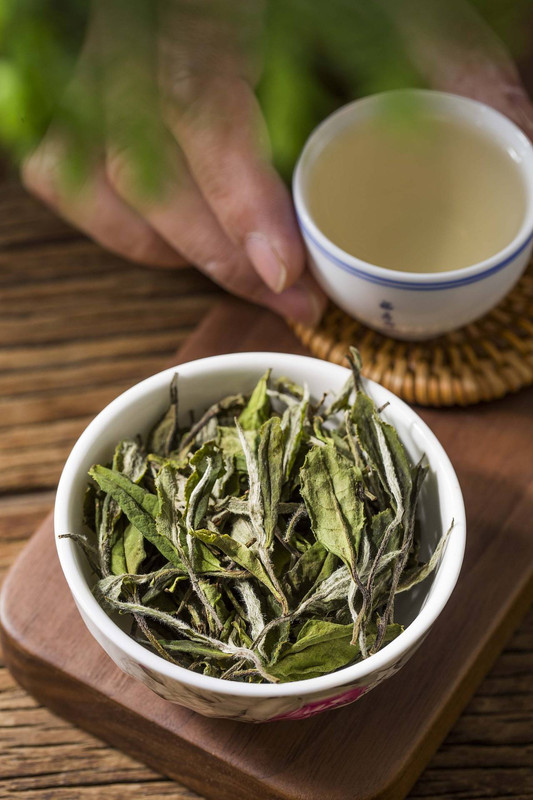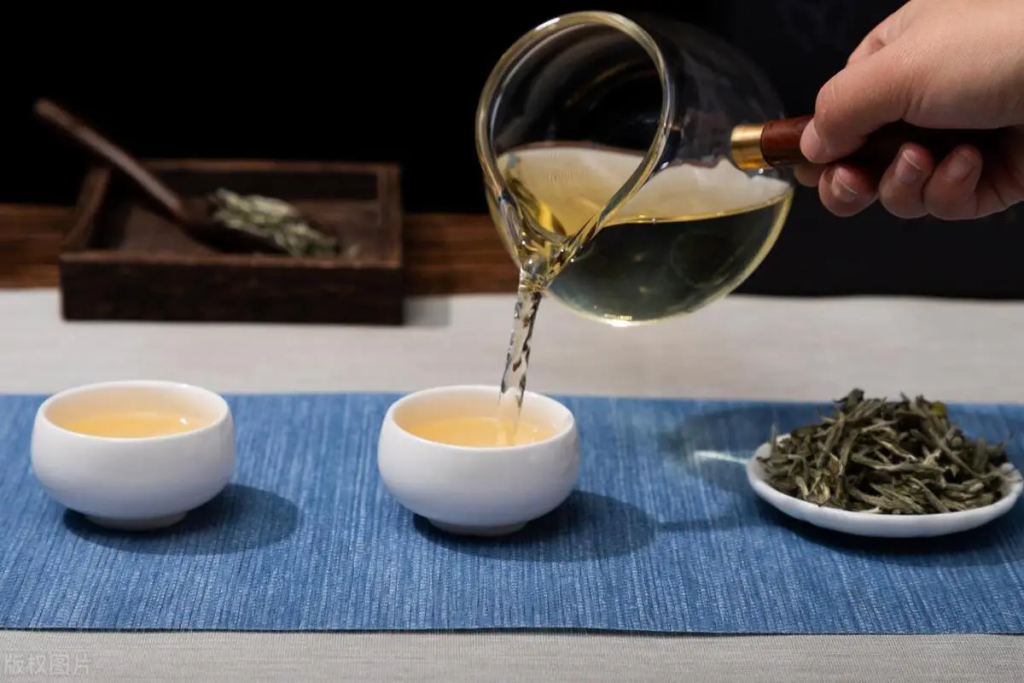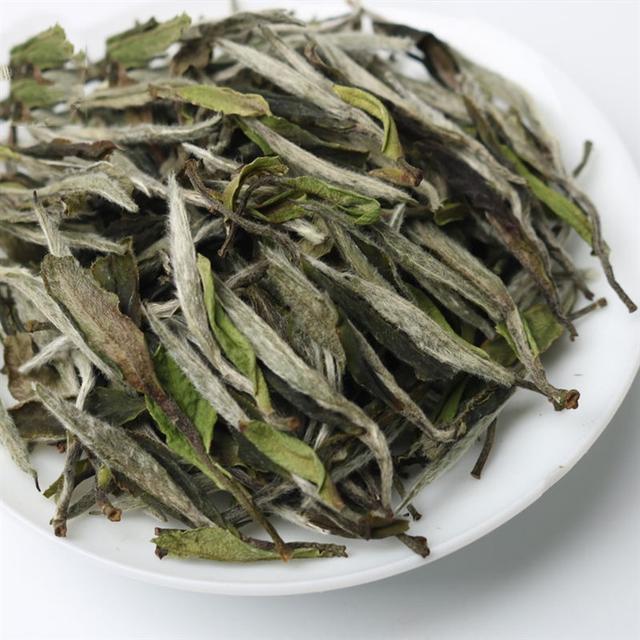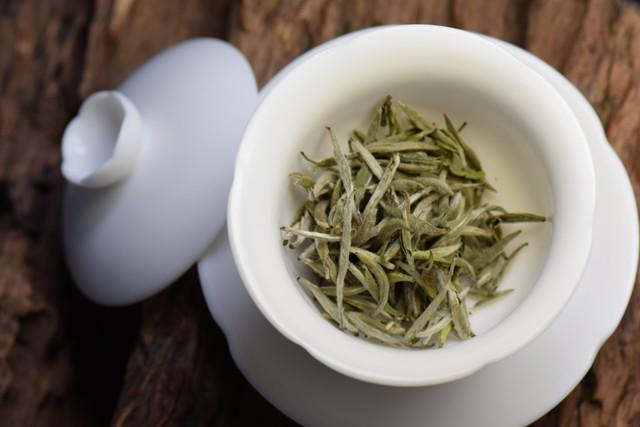Chinese white tea, renowned for its delicate flavor and numerous health benefits, is a unique category within the realm of Chinese tea. Its classification is multifaceted, encompassing factors such as the tenderness of the leaves, origin, tea plant variety, and processing techniques. Below is a detailed exploration of the primary classification methods and characteristics of Chinese white tea.

1. Classification by Tenderness of Leaves
White tea is often categorized based on the tenderness and maturity of the tea leaves and buds. The four main types in this classification are:
- Silver Needle (Baihao Yinzhen)
Considered the “king of white teas,” Silver Needle is made exclusively from plump, unopened buds covered in silvery white down. It features a needle-like shape and a pale silver-green hue. The tea boasts a fresh, mellow, and sweet taste with a distinct “hao xiang” (downy aroma) and floral notes. Silver Needle is typically harvested in early spring, making it the most tender and prized white tea. - White Peony (Bai Mudan)
White Peony consists of a bud and one or two young leaves. It is further divided into four grades: Superfine (Peony King), Grade 1, Grade 2, and Grade 3. The leaves are grayish-green with silvery white down on the bud. White Peony offers a balanced flavor profile, combining the freshness of Silver Needle with the sweetness of mature leaves. Its aroma is rich in floral and fruity notes, and the taste is mellow and refreshing. - Gongmei (Tribute Eyebrow)
Gongmei is made from a bud and three or four leaves, or sometimes just tender shoots. It is categorized into four grades: Superfine (Gongmei King), Grade 1, Grade 2, and Grade 3. Gongmei features a darker color and a stronger, more robust flavor compared to White Peony. It is known for its lasting sweetness and subtle herbal aroma. - Shoumei (Longevity Eyebrow)
Shoumei is the most mature white tea, made from a bud and four or five leaves, or even older leaves. It is available in two grades: Grade 1 and Grade 2. Shoumei has a coarse appearance with visible stems and a mild, sweet taste. While less delicate than other types, Shoumei is appreciated for its affordability and mellow character.
2. Classification by Origin
The origin of white tea significantly influences its flavor and aroma due to variations in climate, soil, and tea plant varieties. The most famous white tea-producing regions include:
- Fuding White Tea (Fujian Province)
Fuding, located in northeast Fujian, is renowned for its high-quality Silver Needle. Fuding white teas are characterized by their fresh, sweet, and floral aroma, with a clear and bright yellow liquor. The tea plants here, primarily Fuding Dahao and Fuding Dabai, produce buds that are fat, silvery, and rich in down. - Zhenghe White Tea (Fujian Province)
Zhenghe, in northern Fujian, is famous for its White Peony. Zhenghe white teas are known for their mellow and thick texture, with a deep and lasting aroma. The tea plants, mainly Zhenghe Dabai and Fuan Dabai, yield slender buds with slightly thinner down compared to Fuding varieties. - Yunnan Moonlight White Tea
Produced in Yunnan Province, Moonlight White Tea is crafted from a unique tea plant variety. Its leaves are large and dark green, with a distinctive white underside. The tea features a light, sweet, and honey-like aroma, differing significantly from Fujian white teas.
3. Classification by Tea Plant Variety
White tea can also be categorized by the tea plant cultivars used. Common varieties include:
- Fuding Dahao and Fuding Dabai
These are the primary cultivars in Fuding, known for their robust buds and high-quality Silver Needle production. - Zhenghe Dabai and Fuan Dabai
These cultivars are widely used in Zhenghe and produce White Peony with a rich, full-bodied flavor. - Caicha (Small Leaf Tea)
A traditional variety used in Gongmei production, known for its unique aroma and flavor.
4. Classification by Processing Technique
White tea processing is minimal, involving only withering and drying. However, variations in technique can lead to different styles:
- Traditional White Tea
Made using natural withering (sun-drying) and gentle drying, preserving the tea’s natural flavors and aromas. This method produces teas with fresh, floral, and fruity notes. - New Process White Tea
Introduced in the 1960s, this method adds light fermentation and rolling to the traditional process. The resulting tea has a darker color, richer aroma, and thicker texture, resembling oolong tea in some aspects.
Conclusion
Chinese white tea’s classification reflects its rich diversity and the intricate relationship between nature and human craftsmanship. From the delicate Silver Needle to the robust Shoumei, each type offers a unique sensory experience. Whether you prefer the fresh elegance of Fuding Silver Needle or the mellow depth of Zhenghe White Peony, exploring the world of white tea is a journey of discovering the subtle nuances of flavor, aroma, and cultural heritage. For tea enthusiasts and newcomers alike, Chinese white tea presents a captivating realm of appreciation and enjoyment.



